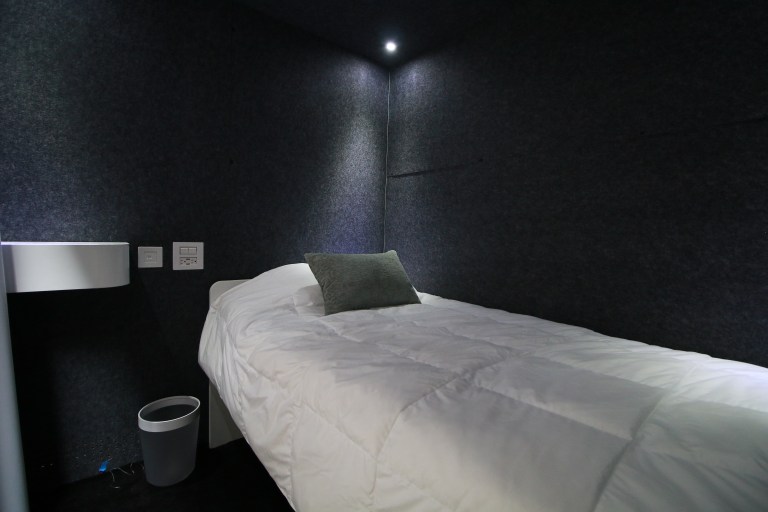
To serve students and professionals looking to catch up on sleep between classes or work projects, so-called sleeping pods are coming to venues like offices and universities. HOHM, for instance, recently brought its pods to the campus of the University of Arizona. The company’s founder and CEO, Nikolas Woods, said the pods have had a good reception and that the company has already seen a consistent repeat user rate in the first two weeks of the installation.
The HOHM pods, in particular, are 43.5 square feet and can be placed in a variety of venues from offices to universities as well as hospitals, airports and coworking centers. For his offering, Woods said that he seeks to bring not just a sleeping pod but a full turnkey solution to the table. “It’s our HOHM rest pod, sleeping pod but it’s also the technology for the people of that location to book it,” Woods told PYMNTS in an interview.
With the technology, the company offers a mobile-friendly website that allows consumers to see the pods that are around them. In that sense, Woods suggested that the interface is similar to that of a ridesharing app. Through the site, consumers can book a pod to recharge for a block of time ranging from 30 minutes up to 4 hours.
Once they make their reservations at the sleeping pods, they receive confirmation codes. They, in turn, walk up to the sleeping pod installation where attendants verify their codes and check them in. Beyond check-in, the attendant is also there to make sure everything is running smoothly: The worker sees to make sure the pods are cleaned after every use, for instance.
The Partnership Approach
For universities, the company offers a way for students to test out its product: The company lets students try out its product for two hours each month at no cost. “We provide every student with kind of a little base of time every month to use HOHM,” Woods said. If students go beyond the initial two hours, they pay for the additional time with a credit or debit card. (The company has Stripe’s technology linked up to its website.)
In order to support the free hours, the company has partnerships with brands that pay to have their products like mattresses, sheets and pillows in the pods. As a result, brands are able to get exposure for their products and students get to try the sleeping pod concept out. At the same time, Woods said the strategy allows the company to scale though multiple locations quickly and allows for high usage at the pods.
The pods themselves have some of the creature comforts that a traveler looking to recharge might want such as a twin-sized bed and a privacy curtain. They also have charging stations so consumers can recharge their smartphones or mobile devices while they are napping. Woods said that he plans to have a bedside tablet coming in the spring that would allow consumers to extend their stay and set an alarm. “There’s a lot of cool things we’re working on,” Woods said.
The Sleeping Pod Market
Woods noted that other firms have produced napping chairs, and, in addition, companies have brought the idea of sleep into the work place with concepts like nap rooms. “I think there’s definitely a demand and interest for a product like this,” Woods said. Going forward, Woods said he would like to expand and ideally see his product in several universities, corporations and airports as well as music festivals. “Wherever people need sleep, we want to be there,” Woods said.
Similar to HOHM, companies like Sleepbox seek to provide a brick-and-mortar hotel alternative by offering modular sleeping capsules that can fit into existing buildings. The aim of such units is to lower the barrier to entry to the hospitality market — and allow lodging concepts to emerge in places that might not be ideal locations for traditional hotel concepts.
Sleepbox’s units, as HOHM’s appear to be, can be installed in many places where people want to rest such as airports to buildings in city centers. Sleepbox Co-founder and CEO Mikhail Krymov told PYMNTS in a prior interview that the concept “unlocks a whole new world for hospitality,” suggesting that pods could very well be the way that consumers get sleep on the go in the future.